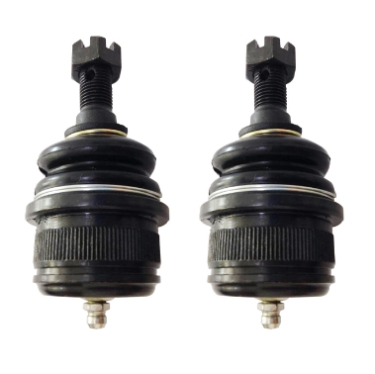Let's delve into why ball joints are so important and how to keep them in top shape.
The Function of Ball Joints
Ball joints are the unsung heroes of your vehicle's suspension system. They act as flexible pivot points, connecting the control arms to the steering knuckles. This clever design allows for a full range of motion in multiple directions, facilitating smooth steering and absorbing road shocks.
Think of ball joints as the human shoulder joint – they allow movement in various directions while keeping everything connected. Without properly functioning ball joints, your vehicle's wheels wouldn't be able to turn or move up and down effectively. This flexibility is crucial for navigating turns, handling bumps, and maintaining stability on uneven road surfaces.
Types of Ball Joints and Their Applications
Ball joints come in various designs, each suited to different vehicles and suspension setups. The main types include:
Load-Carrying Ball Joints: Found in older vehicles and some trucks, these bear the vehicle's weight and provide steering pivot points.
Follower Ball Joints: Common in newer vehicles with strut-type suspensions, these guide wheel movement without bearing weight directly.
Press-In Ball Joints: Pressed directly into the control arm, requiring special tools for replacement.
Bolt-In Ball Joints: Secured with bolts, making them easier to replace than press-in types.
Greasable vs. Sealed Ball Joints: Greasable joints allow for periodic lubrication, while sealed joints are pre-lubricated and maintenance-free.
The type of ball joint your vehicle uses depends on its make, model, and suspension design. Always consult your vehicle's manual or a professional mechanic to ensure you're using the correct type for your specific vehicle.
Choosing Quality Aftermarket Ball Joints
When it's time to replace your ball joints, opting for high-quality aftermarket parts can be a smart choice. Aftermarket components often offer excellent value for money without compromising on quality. These parts are designed to meet or exceed OEM specifications, ensuring compatibility and performance.
Additionally, quality aftermarket ball joints can offer performance that matches or even exceeds that of original equipment, often at a more competitive price point. This makes them an attractive option for cost-conscious vehicle owners who don't want to sacrifice reliability or safety. When selecting aftermarket ball joints, look for reputable brands with positive reviews from automotive professionals and other drivers.
Maintaining Your Vehicle's Ball Joints
Proper care of your vehicle's ball joints is crucial for optimal performance and safety. Regular maintenance can prevent costly repairs and ensure a smooth, controlled ride.
Regular lubrication
If your vehicle has greaseable ball joints, ensure they're lubricated according to the manufacturer's recommendations. This typically involves using a grease gun to apply lubricant through the grease fitting, which helps reduce friction and wear.
Avoid rough driving
While ball joints are designed to handle stress, consistently harsh driving over rough terrain can accelerate wear. Try to avoid potholes, speed bumps, and off-road conditions when possible. If you must navigate rough terrain, do so slowly and carefully.
Address alignment issues promptly
Misalignment can put extra stress on ball joints, leading to premature wear. If you notice your vehicle pulling to one side or uneven tyre wear, have your alignment checked and corrected by a professional as soon as possible.
Replace Worn Ball Joints For a More Comfortable Ride
Ball joints might be small, but their impact on your vehicle's performance and safety is significant. By understanding their function and staying alert to signs of wear, you can ensure your vehicle maintains its smooth ride and precise handling.
Remember, proactive care of your suspension components, including ball joints, is an investment in your vehicle's longevity and your safety on the road.










































